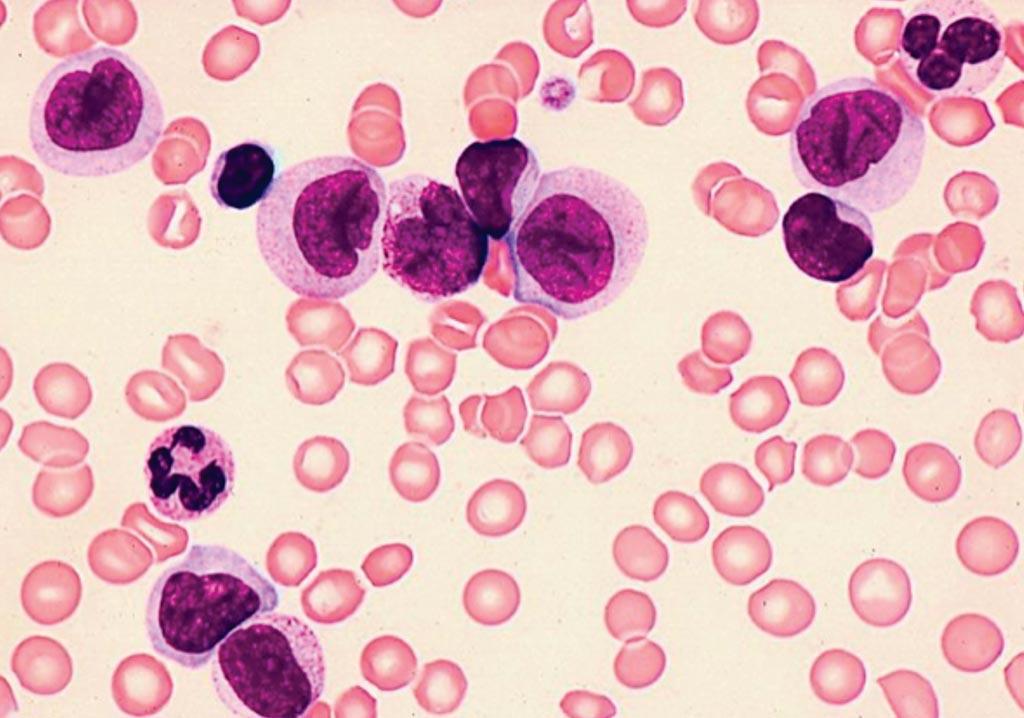DNA Test Predicts Risk of Leukemia Relapse
By LabMedica International staff writers
Posted on 25 Sep 2018
Acute myeloid leukemia (AML) is the most common type of leukemia in adults, comprising about one quarter of all cases. The disease stems from an overproduction of immature blood cells in the bone marrow, which over time outgrow normal blood cells. It's a type of cancer, which starts suddenly and progresses quickly, requiring urgent treatment.Posted on 25 Sep 2018
Treatment involves chemotherapy to wipe out the diseased bone marrow, followed by a bone marrow transplant to reconstitute the patient's blood with cells from a healthy donor. While most patients go into remission after chemotherapy, about one third will relapse three to six months after receiving the transplant.

Image: A blood film from a patient with acute myeloid leukemia (Photo courtesy of the University of Toronto).
A group of Canadian and Korean scientists and physicians working with the University of Toronto (Toronto, ON, Canada) collected 529 bone marrow samples from 104 AML patients who underwent chemotherapy and bone marrow transplant. The samples were collected at different time points: at the time of diagnosis, during the chemotherapy-induced remission, and three weeks after the bone marrow transplant. A subset of patients also gave samples three, six and twelve months after the transplant. Some samples were also taken from bone marrow donors to rule out the possibility that the leukemia cells were introduced by the transplant.
The team identified DNA mutations, which were present at the time of diagnosis and looked for those same mutations at each sampling point. They found that while chemotherapy and bone marrow transplant eliminated most leukemia cells, leading to a reduction in mutation frequency, some initial mutations could still be detected three weeks after the transplant, indicating the presence of treatment-resistant cancer cells. As these same mutations expand in frequency upon relapse, the data suggest that the same cancerous cells that started the leukemia are also responsible for the disease comeback.
Data analysis required the team to develop new computational tools to parse the leukemia-driving mutations from the sea of sequence data. This allowed them to identify low residual mutation frequency of 0.2% to use as a surrogate marker for giving a personal chance of relapse. Dennis Dong Hwan Kim, MD, PhD, an associate professor and co-lead author of the study, said, “In AML, it is very important to predict who is going to relapse. If we are able to identify someone who is at high risk of relapse then we can do therapeutic intervention earlier which can improve their outcome in the long run.” The study was published on August 14, 2018, in the journal Blood.
Related Links:
University of Toronto













